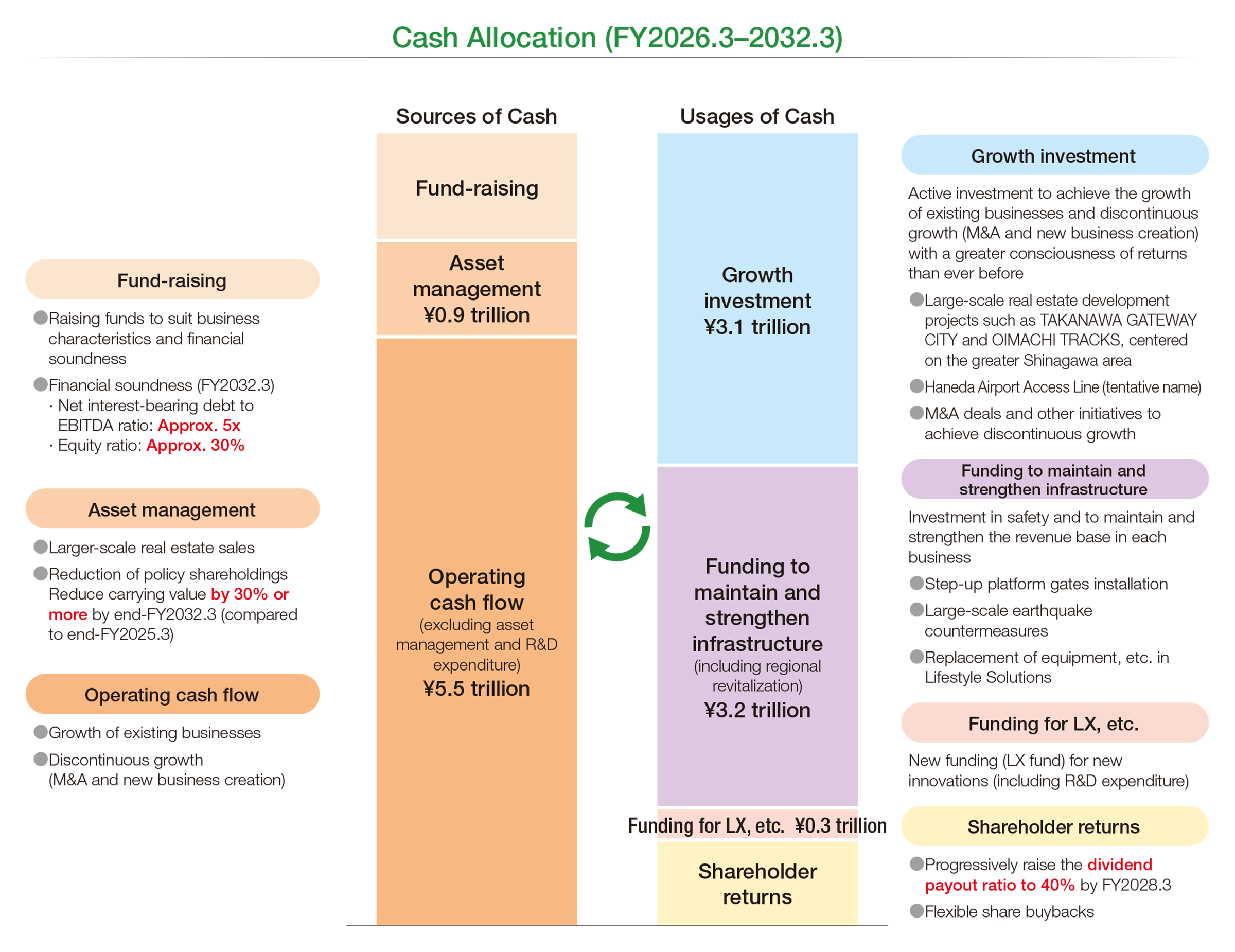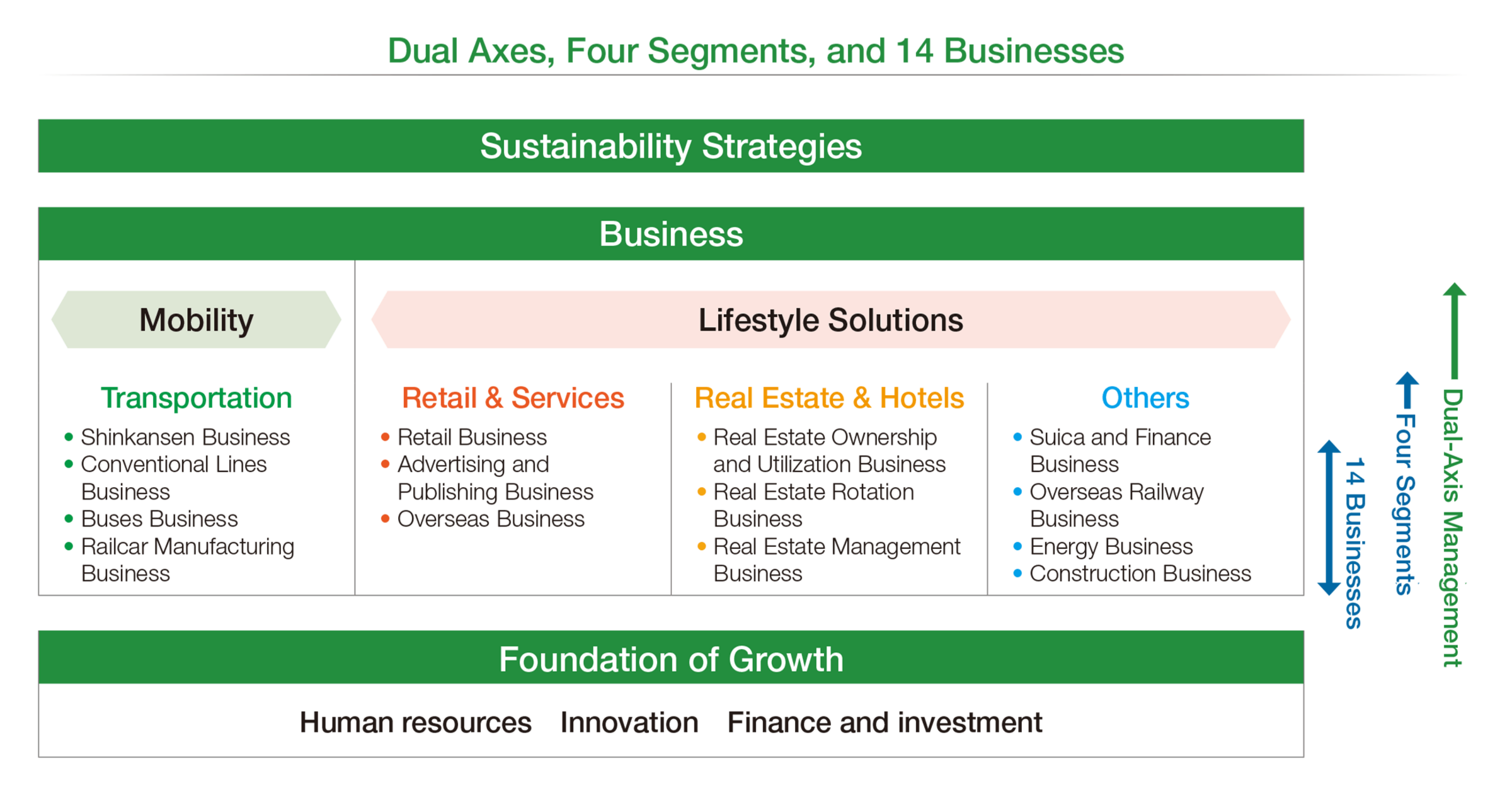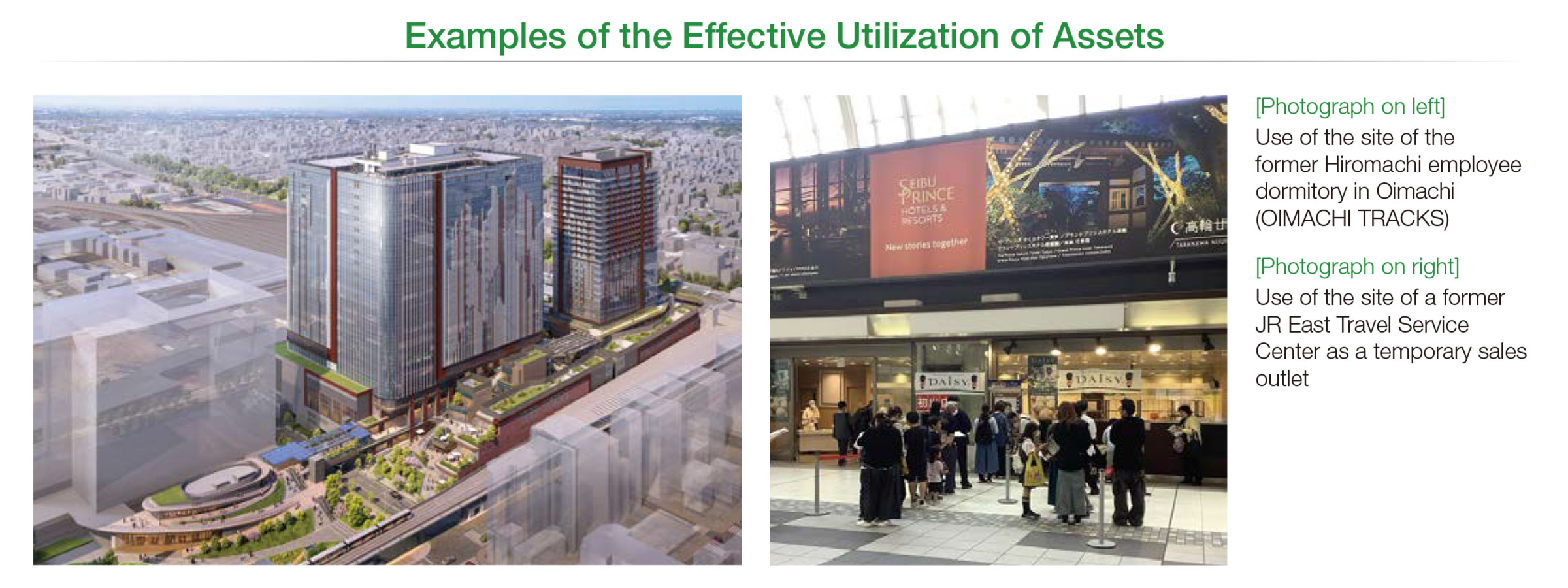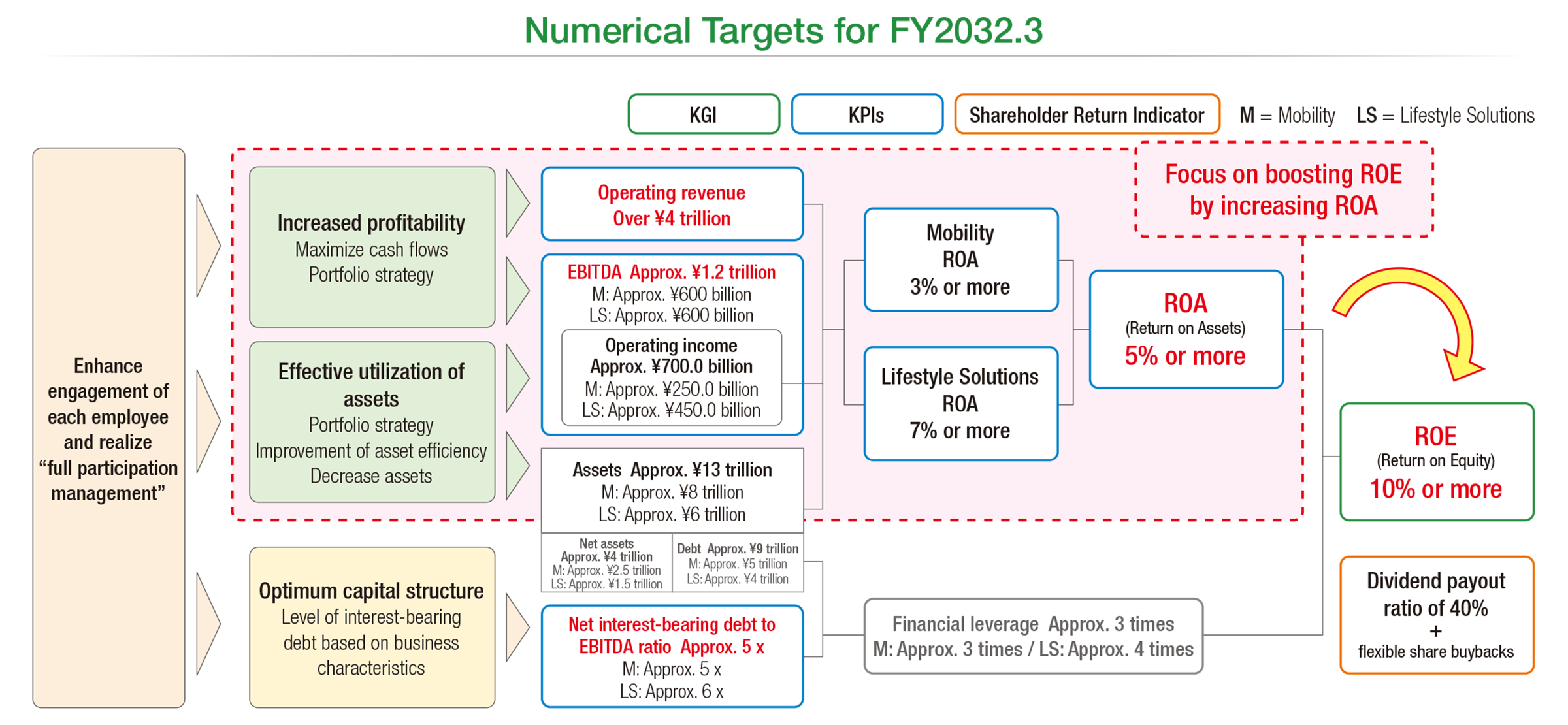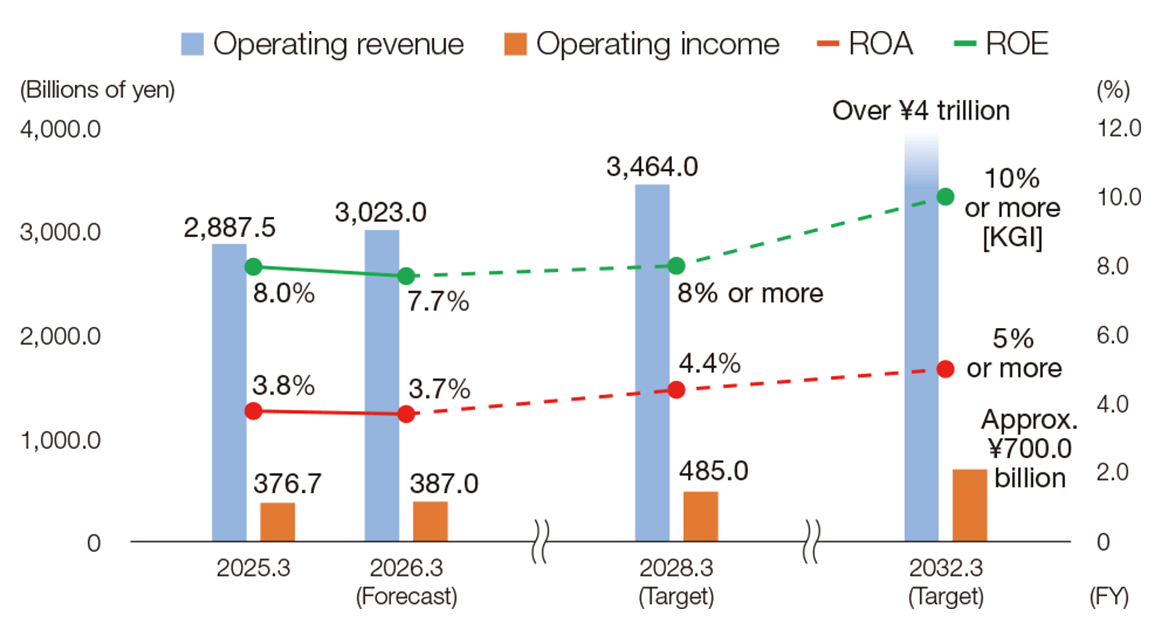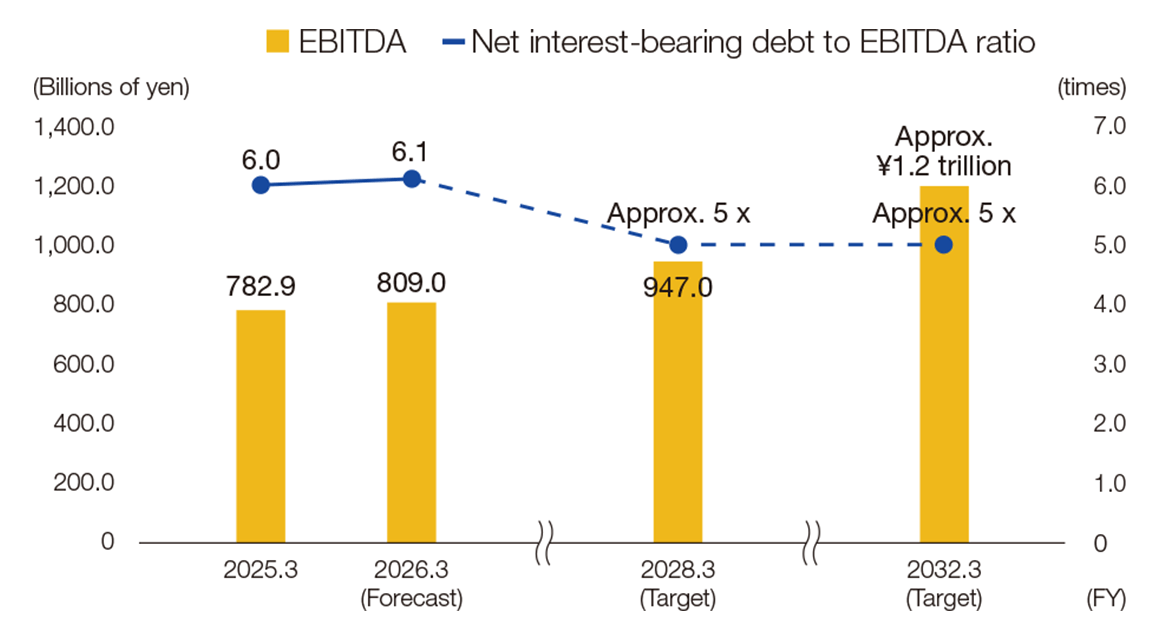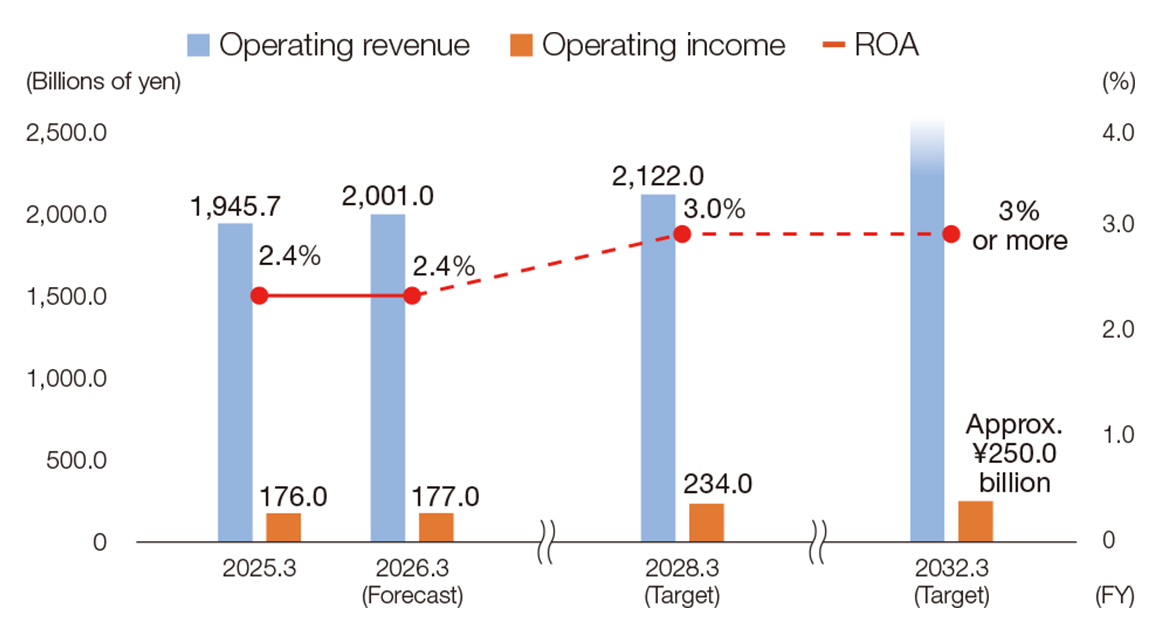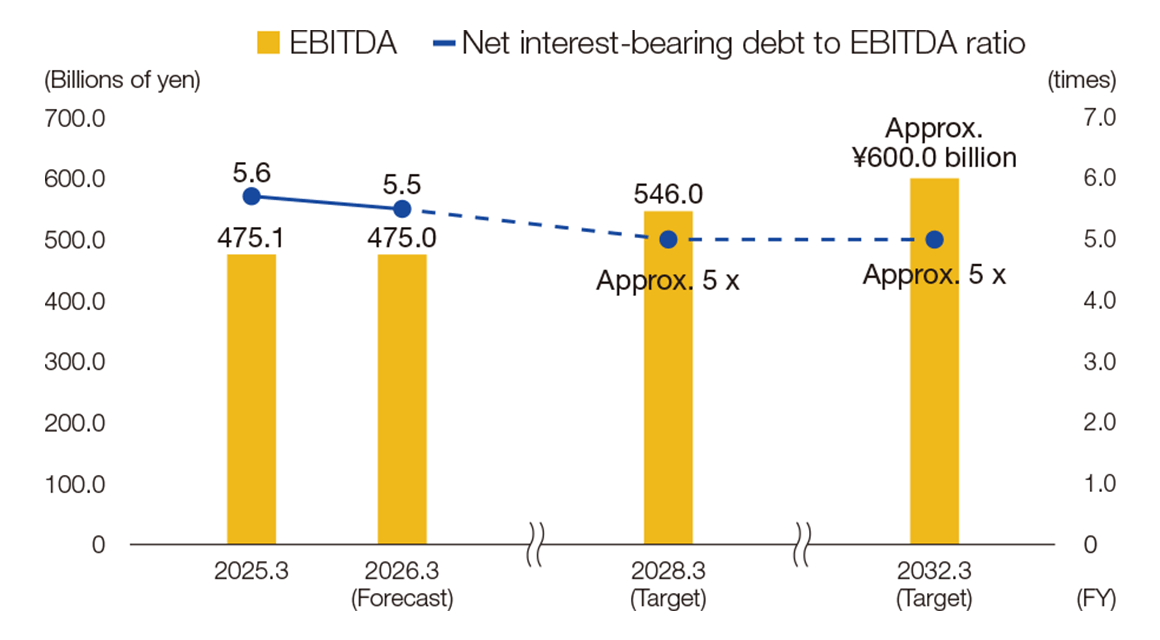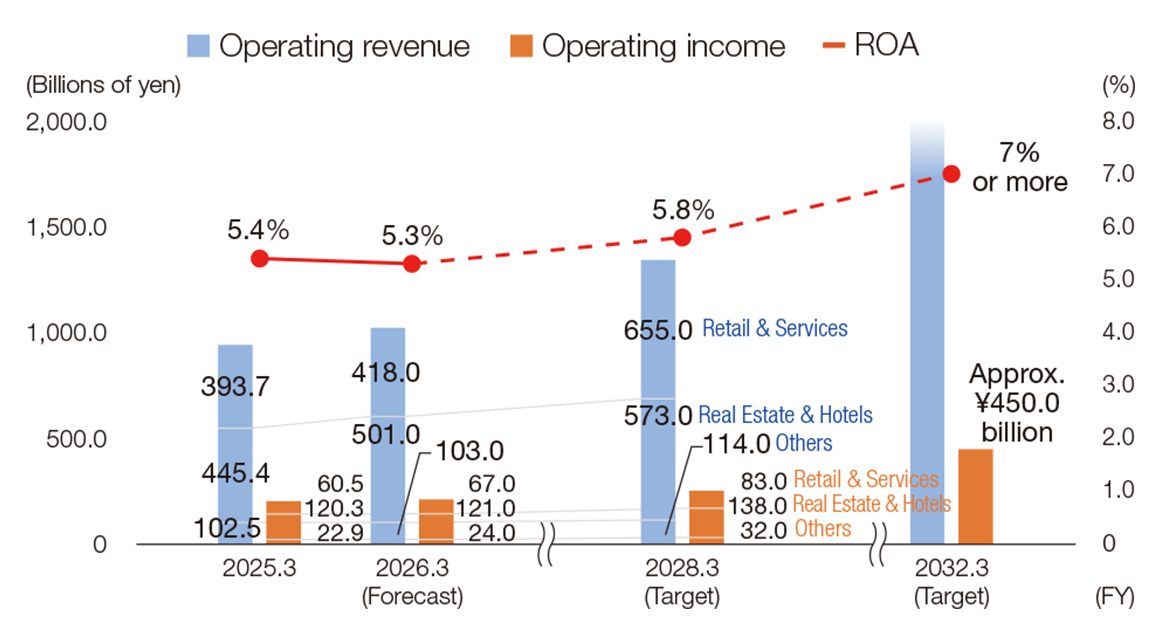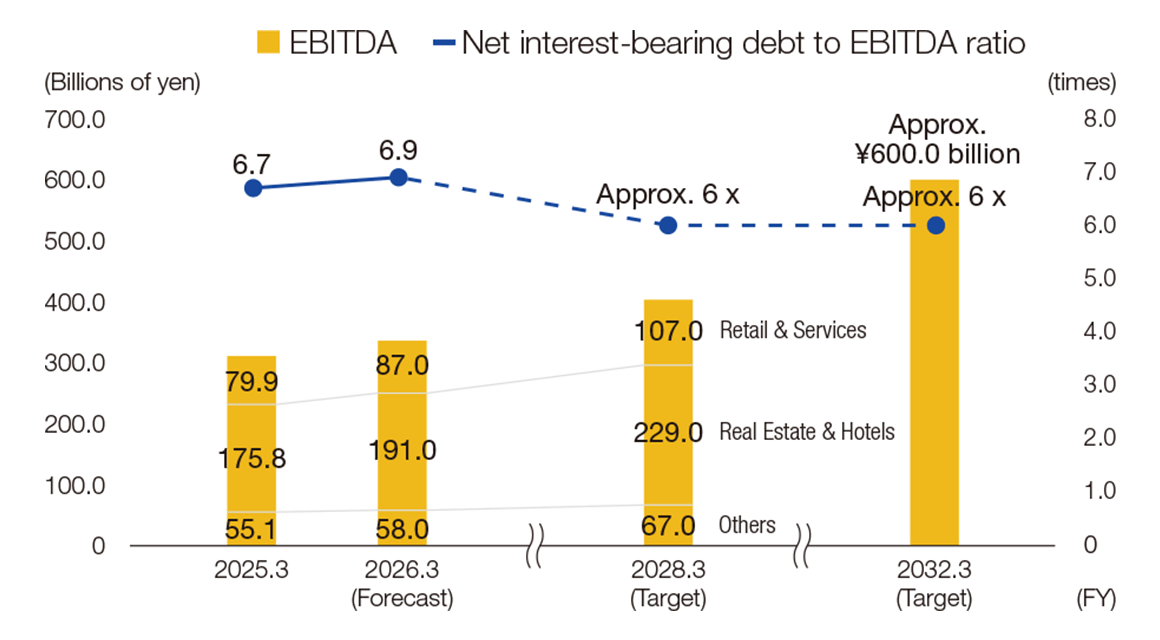Shareholders and investors are important stakeholders for
the JR East Group. We update our action to implement
management that is conscious of the cost of capital and stock price
each half-year. The Company’s price-to-book ratio (PBR), which
indicates the stock market’s evaluation, is the product of return
on equity (ROE), in other words the rate of return, multiplied by
the price-earnings ratio (PER), which reflects anticipated growth.
Therefore, we will increase PBR by both raising the rate of return and
improving growth expectations.
We have made ROE our KGI under “To the Next Stage” 2034,
to clearly convey the Group’s growth story to a wide range of
stakeholders, including the capital markets. By improving the
profitability of each of the dual axes and effectively utilizing assets as I
have explained so far, we aim to raise ROA to 3% or more in Mobility
and 7% or more in Living Solutions, achieving an overall ROA of at
least 5%. In this way, we aim to attain an ROE of 10% or more.
At the same time, we aim to reduce the cost of equity and
enhance the expected growth rate to improve the PER. We
recognize that the cost of equity is around 6% to 7%, given the
level of the market’s expected return that we have gauged through
Shareholders and investors are important stakeholders for
the JR East Group. We update our action to implement
management that is conscious of the cost of capital and stock price
each half-year. The Company’s price-to-book ratio (PBR), which
indicates the stock market’s evaluation, is the product of return
on equity (ROE), in other words the rate of return, multiplied by
the price-earnings ratio (PER), which reflects anticipated growth.
Therefore, we will increase PBR by both raising the rate of return and
improving growth expectations.
We have made ROE our KGI under “To the Next Stage” 2034,
to clearly convey the Group’s growth story to a wide range of
stakeholders, including the capital markets. By improving the
profitability of each of the dual axes and effectively utilizing assets as I
have explained so far, we aim to raise ROA to 3% or more in Mobility
and 7% or more in Living Solutions, achieving an overall ROA of at
least 5%. In this way, we aim to attain an ROE of 10% or more.
At the same time, we aim to reduce the cost of equity and
enhance the expected growth rate to improve the PER. We
recognize that the cost of equity is around 6% to 7%, given the
level of the market’s expected return that we have gauged through
dialogue with shareholders and investors. We will reduce the cost
of equity and expand the equity spread through active dialogue
between the Company’s senior management, shareholders and
investors, as well as by clarifying the Group’s growth story through
the establishment of our KGI and the KPIs for each business axis.
We will also enhance the communication of our growth strategies in
each business through initiatives such as increasing the frequency of
our Investor Relations Days (IR Days) to twice each year and aim to
improve the expected growth rate.
The Group’s strength lies in each of our employees, who diligently
and sincerely performs their daily tasks while playing a leading role in
LX. Our ideal management is one in which each of our employees “
beyond the norm” to create new value with a sense of determination
to shape the JR East Group over the next 10 years. Going forward,
we will continue to seek deeper dialogue with shareholders and
investors, pursuing the enhancement of Group-wide corporate value
to exceed their expectations.
Revision of Railway Passenger Fares
Ever since the establishment of JR East in 1987, we have been
committed to creating a strong management foundation that does
not rely on fare increases, through efficient business operations
focused on securing income and reducing expenses, as well as
further improving safety, stable transportation, and service quality.
Meanwhile, however, the roles and services required of
railway businesses have become more diverse and advanced.
The business environment is expected to remain difficult due to
changes in customer lifestyles, rising prices, and a continuing
decline in the population along railway lines, as well as the need
to improve employee remuneration and benefits to secure human
resources.In December 2024, we applied for the first revision of
passenger fares revision for the first time since the establishment
of JR East, to respond to adverse changes in the business
environment while steadily advancing efforts to maintain and
improve safety and service, update rolling stock and facilities,
expand barrier-free facilities, and prepare for increasingly severe
disasters. This revision was approved by the Minister of Land,
Infrastructure, Transport and Tourism on August 1, 2025.
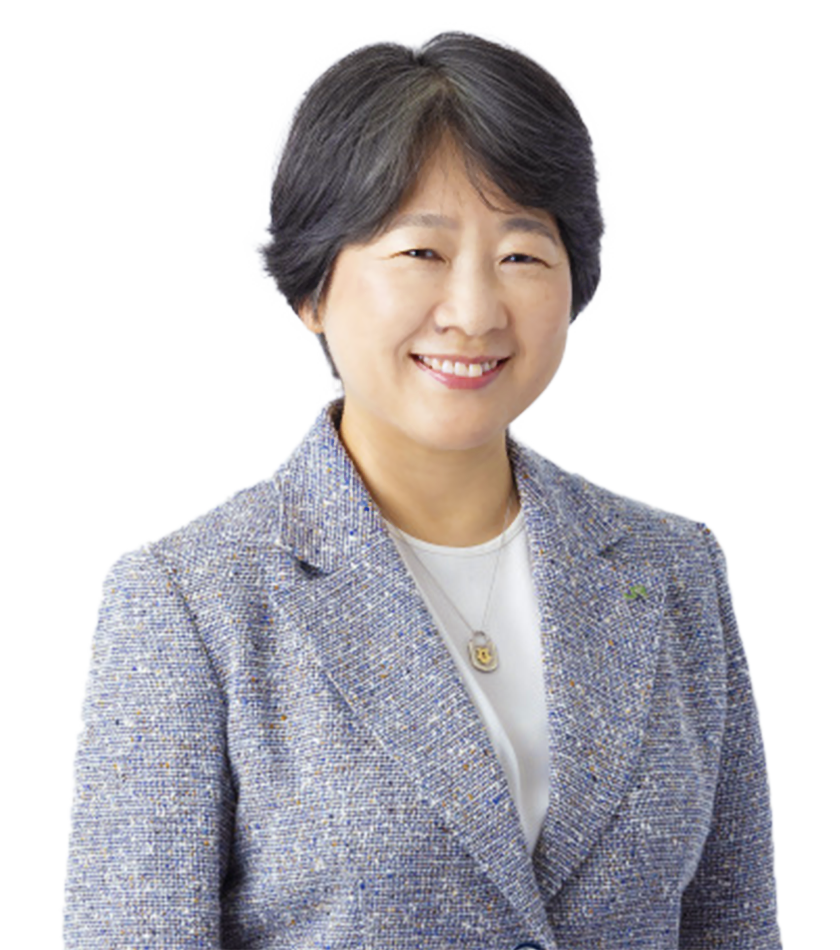
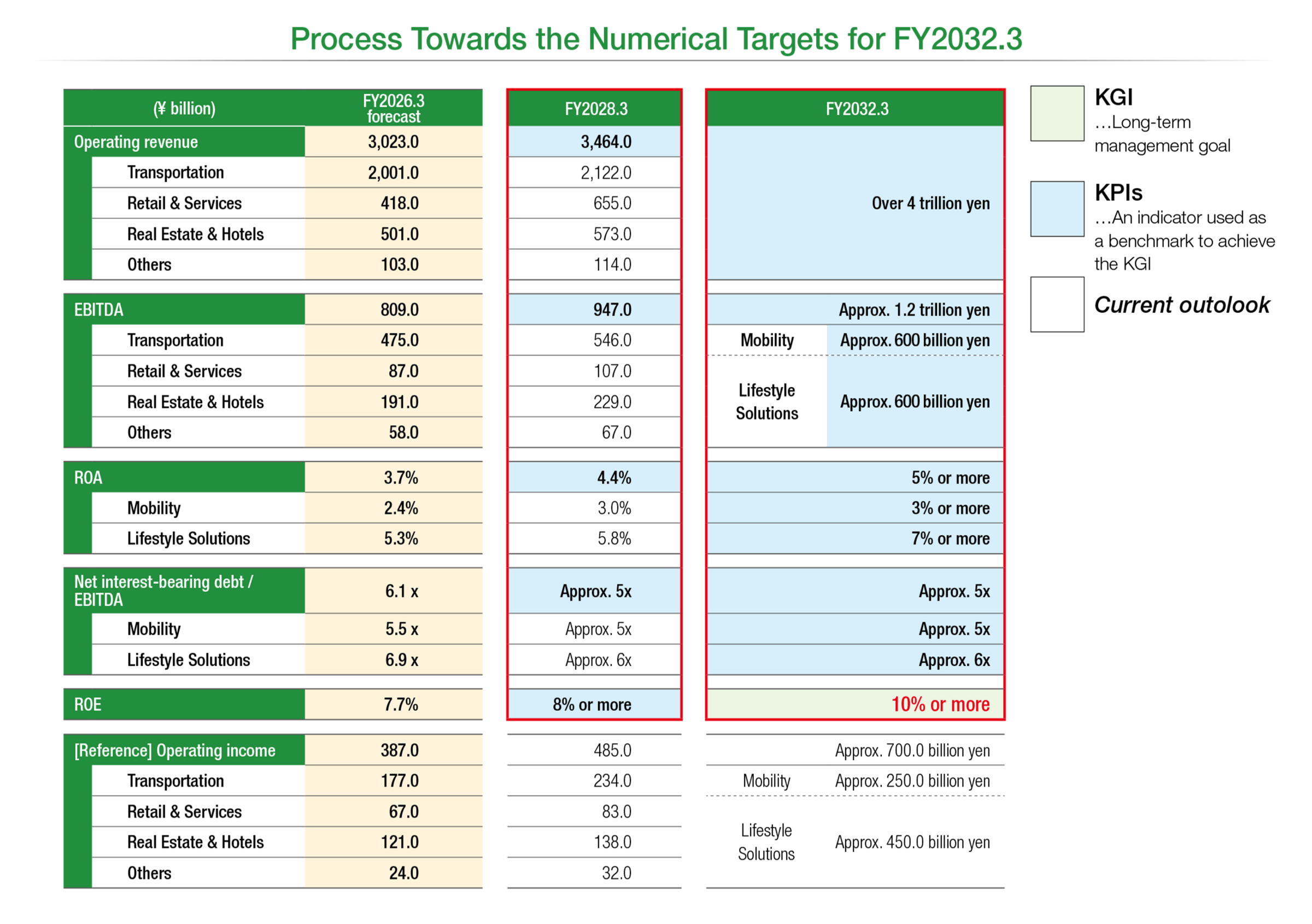
 You can pinch out to zoom in.
You can pinch out to zoom in.